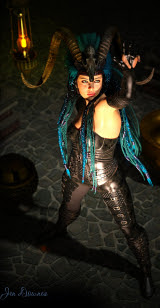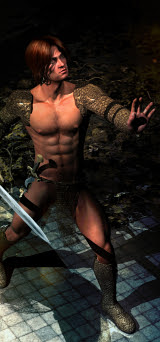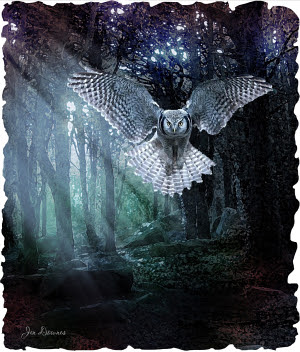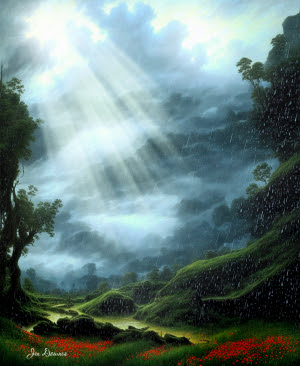




I was surfing around earlier, and landed on a CG art forum, where a couple of dozen people attacked a knotty problem: why are CG artists rarely -- if ever -- respected as artists? And no CG art ever done has -- yet -- been listed or exhibited alongside fine art. This is just the way things are, but why is it so?
Two things came out of the forum, to my mind: one, CG art is in the hands of the multitudes, and anyone can have a bash, and many people are very, very good at it ... so there's no fortune to be made by art critics and dealers. If it all comes down to money, they're going to stick with art which less ubiquitous! Makes sense -- even if some of these commercial galleries are stocked to the rafters with Naive style crayon drawings carrying four-figure pricetags! Don't misunderstand! I'd be the first one to agree that the Turner, Constable or Wright of Derby piece was worth several million bucks. But I don't see the value of a lot of modern art.
The second thing to come out of the forum was this: a lot of people think CG art was done by a computer. Fine distinction there -- done by a computer, not done with a computer. One utter ignoramus distinguished himself by saying, "Anyone can sit in front of a computer and push buttons." It would also be true to say that anyone can grab a crayon and doodle ... and some of that complete rubbish ends up in modern art galleries, framed, with telephone number prices attached!
The misconception that CG art is done "by" a computer bothers me, because the computer is simply a tool. It does only what it's told, and if the CG artist doesn't have the eye, even the soul of the artist, the end result will be -- not to put too find a point on it! -- crap. Only the eye of an artist will create a great picture, no matter what the medium, and CG skills might be different from the skills involved with handling pencils, pastels, paint, but they're skills just the same.
Which drew me back to a question I was asked a while ago: in 3D art, why do you bother with lighting, when the program sets up default lights anyway? I'm hoping the above examples will answer the question! They're uploaded at full size -- and you'll need to see them at full size to appreciate the differences -- and labelled. As an artist, what you're trying to say, or do, through the medium of a picture, is intimately related to light and shadow. Does it matter if you put the shadows in with pastels, or charcoal, or a computer?
If you're interested, here is the forum with the discussion on why CG art is rarely respected. Beware: the folks writing in that forum appear to be barely literate. I've never read such dire English before. However, these guys are artists, not writers, and they could easily be speaking English as a second or third language. They need more lessons! However, if you an brave the mangling of the language, what they're saying is very poignant.
The model in the above renders is my own creation. He's wearing the Victor skinmap and the Rock Star hair by Neftis. The raytraced renders are at the absolute outer limit of what can be done on this system, without an actual render engine like Octane or similar. And if you're curious to know why I'm always yapping on about how I would dearly love to have a system capable of running such a render engine, here is a page which will answer that question, too! For the vast majority of the 50 showcase renders on that page, this computer won't do that work necessary to generate that photographic realism. The power isn't available to handle renders of that complexity. But check those out, and by halfway down the page you'll know why I dream of the day when I can get a system fast enough to run a real, genuine render engine!
Jade, 5 February




















































